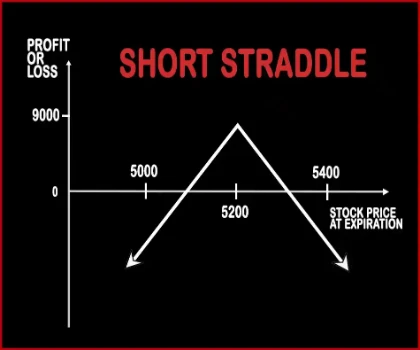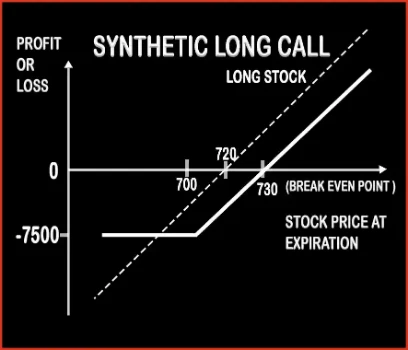Compare Strategies
| SHORT STRADDLE | SYNTHETIC LONG CALL | |
|---|---|---|

|

|
|
| About Strategy |
Short Straddle Option strategyThis strategy is just the opposite of Long Straddle. A trader should adopt this strategy when he expects less volatility in the near future. Here, a trader will sell one Call Option & one Put Option of the same strike price, same expiry date and of the same underlying asset. If the stock/index hovers around the same levels then both the options will expire worthless an |
Synthetic Long Call Option StrategyA trader is bullish in nature for short term, but also fearful about the downside risk associated with it. Here, a trader wants to hold an underlying asset either in physical form like in case of commodities or demat (electronic) form in case of stocks. But he is always exposed to downside risk and in order to mitigate his losses, .. |
SHORT STRADDLE Vs SYNTHETIC LONG CALL - Details
| SHORT STRADDLE | SYNTHETIC LONG CALL | |
|---|---|---|
| Market View | Neutral | Bullish |
| Type (CE/PE) | CE (Call Option) + PE (Put Option) | CE (Call Option) |
| Number Of Positions | 2 | 2 |
| Strategy Level | Advance | Beginners |
| Reward Profile | Limited | When Price of Underlying > Purchase Price of Underlying + Premium Paid |
| Risk Profile | Unlimited | Limited (Maximum loss happens when the price of instrument move above from the strike price of put) |
| Breakeven Point | Lower Breakeven = Strike Price of Put - Net Premium, Upper breakeven = Strike Price of Call+ Net Premium | Underlying Price + Put Premium |
SHORT STRADDLE Vs SYNTHETIC LONG CALL - When & How to use ?
| SHORT STRADDLE | SYNTHETIC LONG CALL | |
|---|---|---|
| Market View | Neutral | Bullish |
| When to use? | This strategy is work well when an investor expect a flat market in the coming days with very less movement in the prices of underlying asset. | A trader is bullish in nature for short term, but also fearful about the downside risk associated with it. |
| Action | Sell Call Option, Sell Put Option | Buy 1 ATM Put or OTM Put |
| Breakeven Point | Lower Breakeven = Strike Price of Put - Net Premium, Upper breakeven = Strike Price of Call+ Net Premium | Underlying Price + Put Premium |
SHORT STRADDLE Vs SYNTHETIC LONG CALL - Risk & Reward
| SHORT STRADDLE | SYNTHETIC LONG CALL | |
|---|---|---|
| Maximum Profit Scenario | Max Profit = Net Premium Received - Commissions Paid | Current Price - Purchase Price - Premium Paid |
| Maximum Loss Scenario | Maximum Loss = Long Call Strike Price - Short Call Strike Price - Net Premium Received | Premium Paid |
| Risk | Unlimited | Limited |
| Reward | Limited | Unlimited |
SHORT STRADDLE Vs SYNTHETIC LONG CALL - Strategy Pros & Cons
| SHORT STRADDLE | SYNTHETIC LONG CALL | |
|---|---|---|
| Similar Strategies | Short Strangle | Protective Put, Long Call |
| Disadvantage | • Unlimited risk. • If the price of the underlying asset moves in either direction then huge losses can occur. | •Chances of loss if the underlying goes down. •Incur losses if option is exercised. |
| Advantages | • A trader can earn profit even when there is no volatility in the market . • Allows you to benefit from double time decay. • Trader can collect premium from puts and calls option . | •Limited risk, unlimited profit. •Protection to your long-term holdings. • Limited loss to the to the premium paid for Put option. |